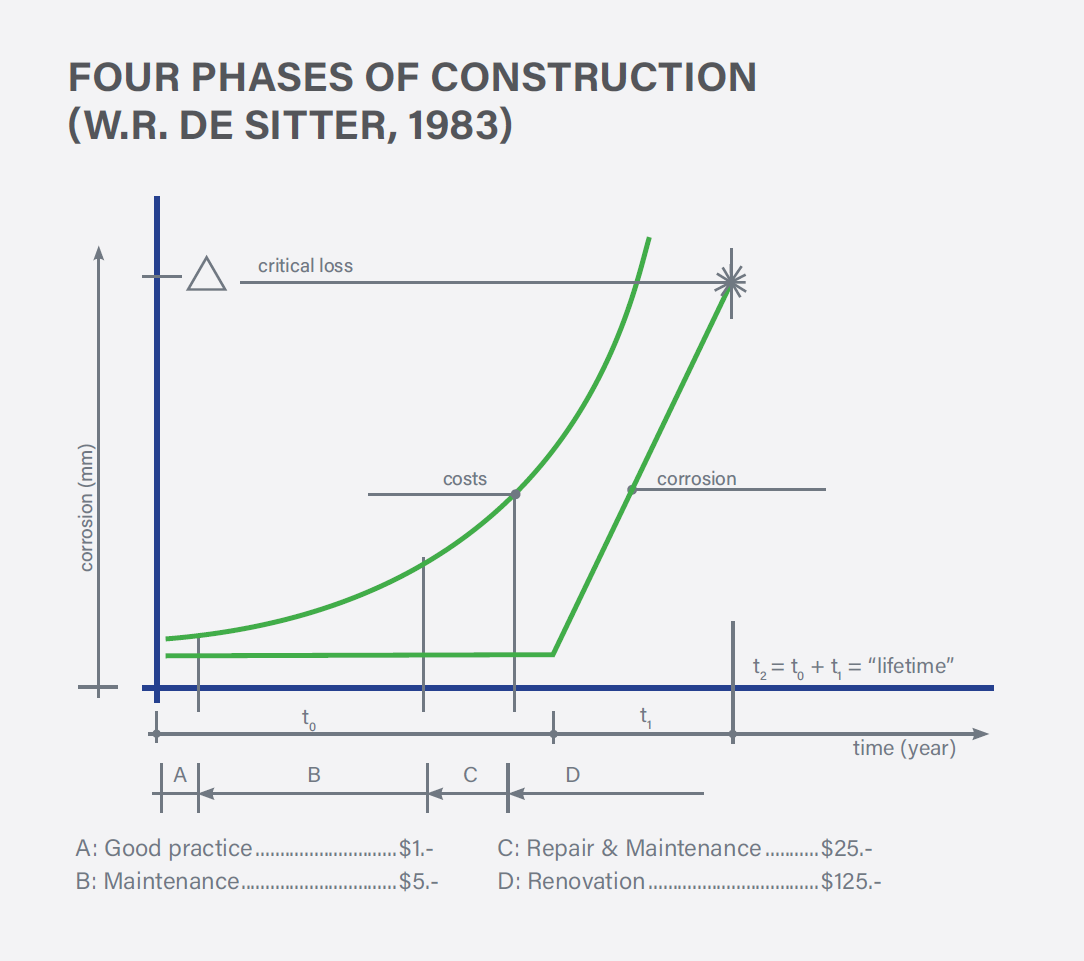Goal 3: Raise awareness of the positive financial impact of durability design and service life extension.
A concrete structure is an asset. It requires proper design, care and maintenance which can result in long lasting service life.
A little extra investment in the early aging of thestructure will significantly reduce long-term expenses.When maintenance is neglected, repairs, when theybecome essential, will generally equal five timesmaintenance costs. If repairs are not carried out,rehabilitation costs will be five times repair costs.
To consider the financial impact of neglecting the need for maintenance and the benefits of periodical maintenance, we need to understand Wolter Reinhold de Sitter’s “Law of Fives.” Sitter, a part-time Professor in the design of structures in concrete at the Eindhoven University of Technology, proposed a Law of Fives for structural concrete maintenance.
The theory proposed that the life of a concrete structure, with respect to durability, can be divided into four phases (W.R. de Sitter, 1983, Ref. 8):

OBJECTIVES
Conduct market research for Concrete Repair Industry (update Vision 2020 market survey).
The annual cost for concrete structure repairs in the US was estimated at $18-21 billion (Ref. 2), with a 2006 survey on repair costs across market segments
(Ref. 2, Appendix 4):
Due to inflation, aging concrete structures, and growing repair needs, the US market for concrete repair could reach $50 billion, with further evaluations to follow.
Assemble the best asset management practices for extended service life of concrete structures.
Estimate the value of existing concrete structures to attract investment. Predict lifespan and plan for service life extension using guidelines like ACI 365.1R and ACI CODE 365. Real-world examples show that asset management, including maintenance, extends lifespan for safe use.
Due to inflation, aging concrete structures, and growing repair needs, the US market for concrete repair could reach $50 billion, with further evaluations to follow.
Based on real-world applications in industrial and infrastructure sectors, tangible benefits of an integrated asset management can be demonstrated.
For example, through maintenance and rehabilitation interventions, the asset lifespan may be extended for safe and efficient use of infrastructure by 20-25%.
Assemble case studies of financial benefits based on Sitter’s “Law of Fives.”
Repair and rehabilitation are often more economical than replacement, with potential savings of three to ten times the cost.
